The ecliptic is the term used to describe the circular path that the Sun appears to take in the Earth’s sky.
The ecliptic in ancient times

However, it is worth mentioning that the arrangement of the holes in the stones of Stonehenge was deliberate and purposeful, designed to align with the sunsets of the Moon during its maximum distance from the Sun’s path (ecliptic). These specific occurrences are known as “upper Moon” and “lower Moon”, where the Moon deviates approximately 5 degrees from the ecliptic. The phenomenon is a result of the Moon’s orbits diverging by 5.1 degrees.
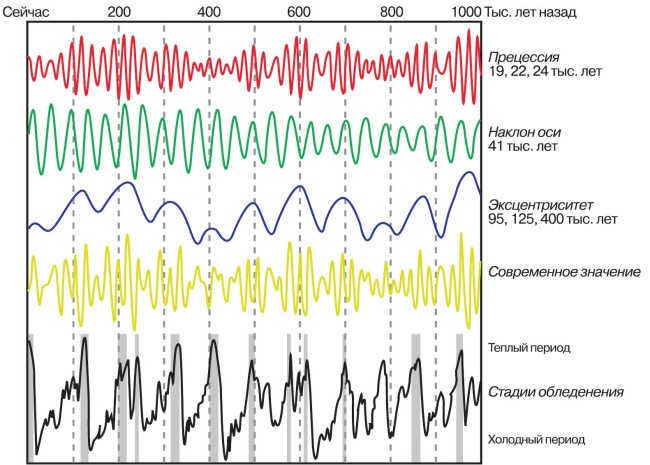
Illustration showing the impact of Milankovitch’s cycles on time
Earth’s tilt causes the seasons to change as it rotates along its axis, which is tilted about 24 degrees to the ecliptic. However, the axis is not fixed and experiences periodic fluctuations due to gravitational interactions with other objects in the Solar System. These fluctuations occur over long periods of time, such as the 26,000-year precession cycle discovered by Hipparchus, as well as shorter periods of a few tens of years, known as nutation and discovered by James Bradley in 1728. These fluctuations cause a slight shift in the Sun’s position relative to the ecliptic for an observer on Earth. In the early 20th century, Milutin Milankovic began studying even longer cycles, which are now referred to as Milankovitch cycles.
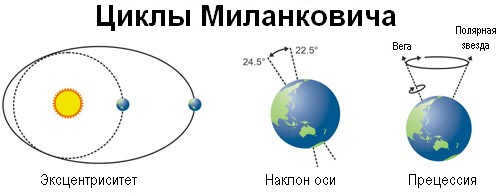
Theorists propose that the periodic ice ages on Earth in the past million years might be attributed to the Milankovitch cycles, which occur every 100,000 years. These cycles have a physical significance in that they result in slightly varying amounts of sunlight received by the northern and southern hemispheres in different millennia. When the northern hemisphere experiences a deficit in energy, it initiates the process of accumulating polar ice (as it contains more land compared to the southern hemisphere).
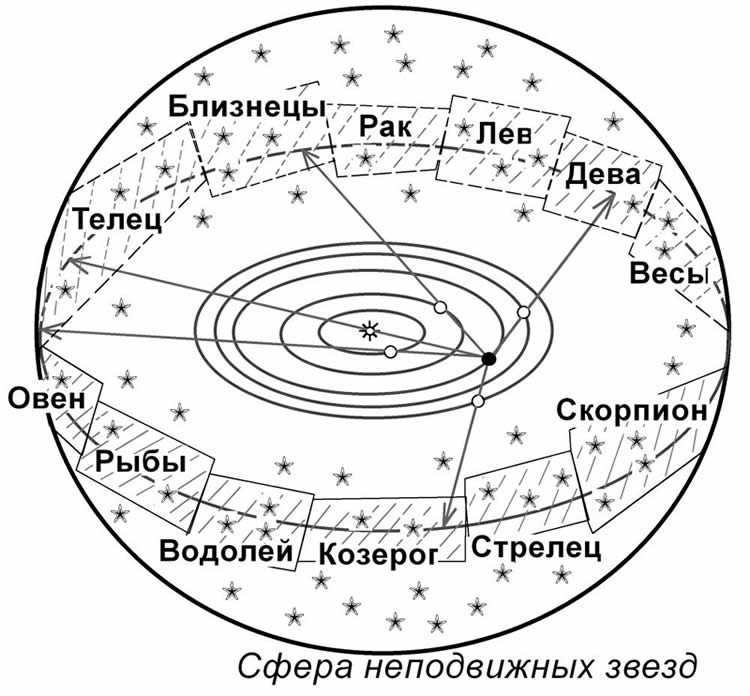
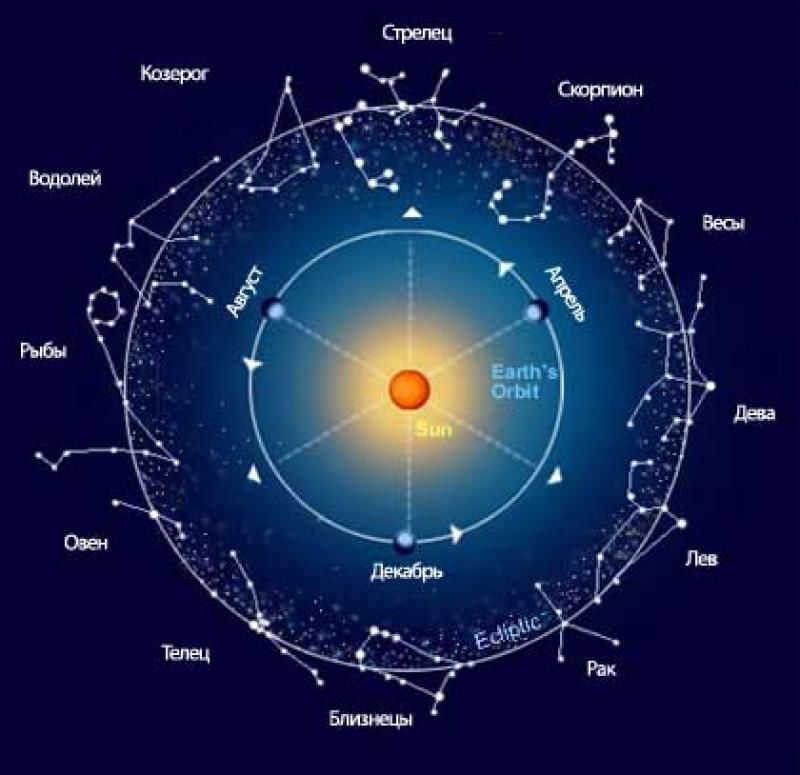
For an extended period, the zodiacal constellations were extensively utilized for the purpose of forecasting the destinies of individuals or even whole nations (the placement of the Sun in a specific constellation at the moment of their birth or during other significant occurrences was taken as a reference point). Subsequently, seemingly in jest towards these superstitions, professional astronomers in 1930 incorporated the 13th zodiacal constellation, Serpentine, in the final delineation of the sky into constellations (the Sun traverses through it roughly between November 30 and December 17).
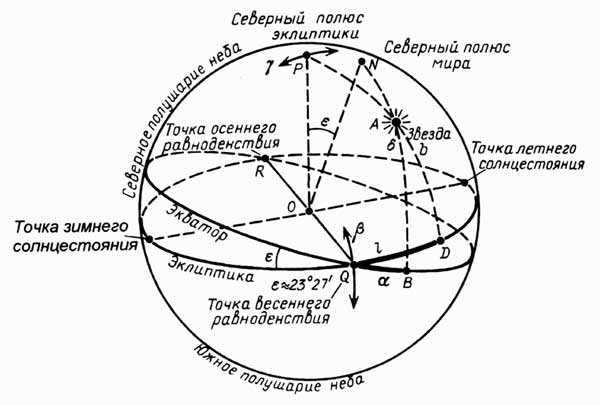
In addition to the solstice points of winter and summer, there are also equinox points in spring and fall. These points indicate the time when the number of daylight hours is equal to the number of night hours, which typically occurs around March 20-21 and September 22-23. Furthermore, these points signify when the Sun crosses the celestial equator. Due to the phenomenon of precession, these points undergo a continuous shift along the ecliptic (having moved 20 degrees over the past two thousand years). Therefore, during the beginning of our era, the vernal equinox point was situated within the zodiac constellation of Aries, whereas it has now migrated to the constellation of Pisces. Similarly, the fall equinox point has shifted from the constellation of Libra to the constellation of Virgo.
Arrangement of the Orbital Paths of Celestial Bodies in the Solar System
As per contemporary theoretical concepts, the Solar System took shape within a cloud of gas and dust known as a protoplanetary nebula. Consequently, the majority of the orbits of the celestial bodies that formed within the Solar System initially resided within a single plane. The sole exception to this pattern was the trajectories of comets originating from the Oort cloud (where most comets were created in the protostellar nebula or were gravitationally captured by the Sun in the interstellar space). Specifically, “extraterrestrial” comets (hailing from the interstellar medium) are most commonly observed to follow retrograde orbits. These types of orbits are referred to as reverse (retrograde) orbits and they have an inclination ranging between 90 and 180 degrees.
After the formation of the Solar System, the orbits of the objects in the Solar System, such as planets and asteroids, experienced constant changes due to gravitational disturbances and close encounters with stars. These disruptions caused the orbits to become less circular and more eccentric, and also caused the inclination of the orbits to deviate from the original plane of the protoplanetary disk. Among the planets in the Solar System, Mercury has the greatest difference in inclination compared to Earth’s orbit, with a deviation of 7 degrees, while Uranus has the smallest difference, with a deviation of less than one degree.
For instance, the largest dwarf planet in the Solar System, Erida, has an orbital inclination of 44 degrees.
Typically, the majority of Solar System objects follow orbits that are close to the ecliptic plane. With this in mind, the investigation for near-Earth asteroids and comets that have the potential to collide with our planet is not actively pursued in the vicinity of the ecliptic poles.

Aside from planets, asteroids and comets in the Solar System, one can observe what is known as the zodiacal light, which are clusters of dust primarily located in the ecliptic plane. This light is visible even without any nighttime illumination. It is believed that this dust is generated by collisions between asteroids. However, it is expected that this dust cannot persist in the Solar System for an extended period of time as it is blown away by sunlight.
Orbital inclinations of exoplanets
Observing alien planetary systems and their protoplanetary disks has become possible in recent decades. Current research has revealed that nearly every star has the potential to possess small planets located within a short distance from the star, even inside the Earth’s orbit. To date, several planetary systems with multiple planets have been identified, with the Kepler-90 system being particularly notable for its eight transiting planets. Another system, TRAPPIST-1, has seven transiting planets, further demonstrating the similarity in exoplanet orbital inclinations to our own Solar System.
However, a closer examination of planetary systems with open transiting planets has also unveiled numerous instances of non-transiting planets. These systems exhibit a significant variation in the inclinations of their exoplanet orbits, indicating a departure from the pattern observed in systems like Kepler-90 and TRAPPIST-1.
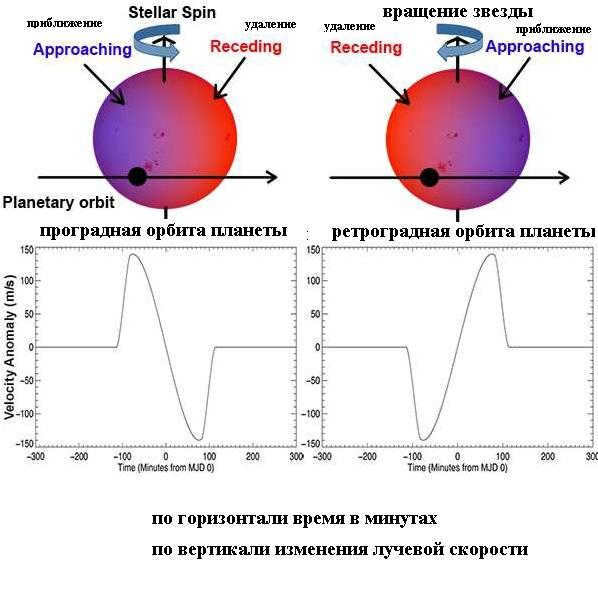
Planetary orbits can be classified as either prograde or retrograde.
Alternatively, we can determine the angle between the equator of a star and the orbital plane of a transiting planet by measuring the radial velocities of stars with known transiting planets. This is known as the Rossiter-McLaughlin (RM) effect. So far, the RM effect has been measured for 134 transiting planets.
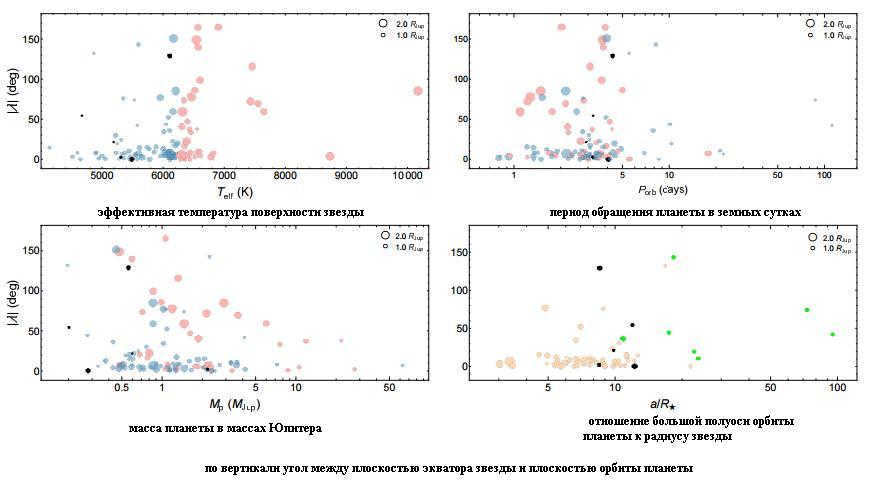

The data obtained from the measurements indicate that the majority of transiting planets have orbits that are near the equatorial plane of their host stars.
Furthermore, as depicted in the aforementioned diagrams, some transiting planets even exhibit retrograde rotation. Theorists propose that these peculiar orbits may be attributed to the presence of other massive objects, such as planets or stars, within the system.
Enjoyed this article? Share it with your friends!
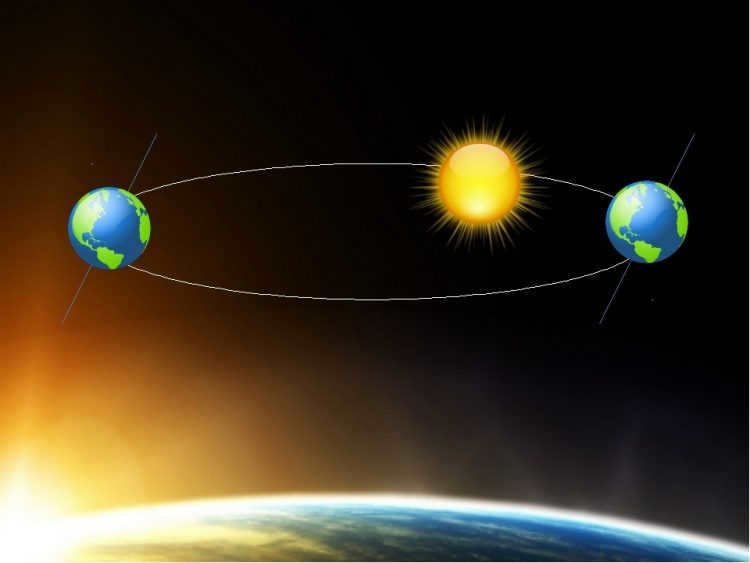
- History of Astronomy
The term “Ecliptic” refers to the imaginary line, known as the great circle of the celestial sphere, along which the Sun moves among the stars throughout the year.
It also describes the visible path that the Sun follows throughout the year as it passes through the twelve constellations of the zodiac and the constellation of the Serpentine. This path coincides with the line that defines the plane of Earth’s orbit and the orbits of other planets around the Sun.
The term “ecliptic” (derived from the Greek word εικλειπτική, meaning “eclipse line”) is connected to the ancient understanding that solar and lunar eclipses happen when the Moon is close to the points where its path intersects with the ecliptic. These specific points on the celestial sphere are referred to as lunar nodes, and their rotational period along the ecliptic is known as a saros or draconic period, lasting approximately 18 years.
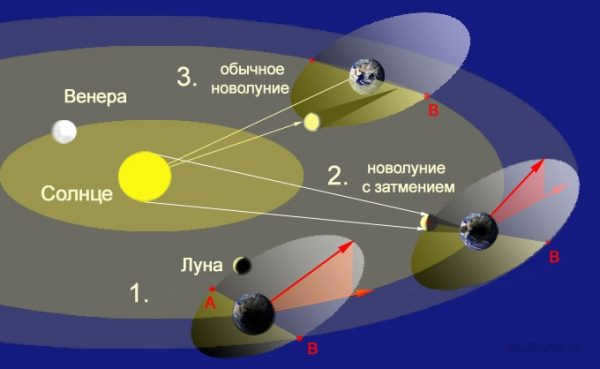
Most of the planets in the solar system orbit along the ecliptic plane, moving in the same direction as the Sun’s rotation.
The Sun and the planets are aligned on a similar plane due to a specific reason. This reason can be traced back to the early stages of the formation of the solar system.
Due to the Moon’s tilted orbit in relation to the ecliptic and the Earth’s rotation around the barycenter of the Moon-Earth system, as well as the perturbations caused by other planets, the true position of the Sun may deviate slightly from the ecliptic by a few seconds of arc. It can be said that the ecliptic represents the path of the “average Sun”.
The coordinate system in astronomy utilizes the ecliptic as its fundamental circle.

Celestial latitude is measured by the east-west distance from the north to south poles of the ecliptic (the point on the celestial sphere where it intersects with a line perpendicular to the plane).
The celestial equator is divided into two points called the equinoxes or nodes by the ecliptic. In the middle of the path between them lie the summer and winter solstices.
The celestial equator or equinox line is a plane that passes through the center of the Earth and is perpendicular to its axis of rotation. On star charts, the celestial equator is represented by a line that runs exactly east to west and follows the daily movement of the stars.
Geostationary satellites are positioned precisely in this plane.
The principal plane in the ecliptic celestial coordinate system is known as the ecliptic plane.
What is the definition of the “ecliptic plane”
Aside from serving as a trajectory for the Sun’s yearly movement, the ecliptic is commonly referred to as a plane. When discussing the location and orbits of celestial objects in space, the term “ecliptic plane” is frequently used.

The angle of inclination of the ecliptic plane where it intersects with the plane of the celestial equator is ε = 23°26′.
For millions of years, this angle of inclination has remained constant. However, it has been observed that it decreases by approximately 48 seconds every century. This trend will continue for several thousand years until it reaches a minimum value of 22° 54′.
When examining the motion of our planet around its parent star and connecting the lines from the Earth to the Sun at different points in time, it becomes apparent that they all lie within the same plane – the ecliptic.
In the northern hemisphere, if a perpendicular line is drawn from the center of the disk, it will intersect with a specific point on the celestial sphere with the coordinates:
Astrological Signs

The zodiacal constellations consist of 12 constellations that the ecliptic passes through. These four points, which correspond to the symbols of the zodiac, were originally in different constellations during the time of Hipparchus. Due to the gradual displacement of the vernal and autumnal equinoxes, these points are now located in:
- Aries for the vernal equinox;
- Libra for the autumnal equinox;
- Capricorn for the winter solstice;
- Cancer for the summer solstice.
Ecliptic of the planets in the solar system

In the field of astronomy, scientists also have a keen interest in the movement patterns of other celestial bodies within our solar system. Through careful calculations and observations, it has been determined that all of the major planets orbit the sun along a very similar plane. The planet nearest to the sun, Mercury, stands out as an exception with an inclination angle of its orbital plane to the ecliptic of about 7°.
Orbital Inclination Angles of the Planets in the Solar System relative to the Ecliptic Plane
Among the planets in the outer ring, Saturn has the largest inclination angle in its orbit, measuring about 2.5°. This is understandable considering its immense distance from the Sun, which is ten times greater than that of the Earth. However, the orbits of smaller celestial bodies such as asteroids, dwarf planets, and comets deviate even more significantly from the ecliptic plane.
For instance, the dwarf planet Erida, which is a twin planet of Pluto, has an extremely elongated orbit. At its closest approach to the Sun, it comes even closer to the star than Pluto does, at a distance of 39 astronomical units (a.u.). An astronomical unit is a measurement equal to the distance from the Earth to the Sun, which is approximately 150 million kilometers.
Before returning to the Kuiper belt, it reaches its farthest point of nearly 100 astronomical units (a.u.). As a result, its orbital plane is tilted at an angle of approximately 45 degrees relative to the ecliptic plane.
The celestial representation of the ecliptic plane
It is imperative to grasp the concept of how the celestial path of the ecliptic can be roughly observed.

To start with, it is important to comprehend that this represents the trajectory that the Sun, Moon, and planets follow across the celestial sphere when observed from Earth. This conceptual line can be best visualized during the period leading up to a full moon, particularly when there are prominent stars in the celestial expanse.
One must venture to an unobstructed area shortly after sunset. The atmosphere should be clear in order to distinctly delineate the ecliptic line in the subsequent sequence:
- In the western sky, directly above the descending Sun, a luminous planet, namely Venus, will be discernible.
- The Moon will be positioned low in the eastern horizon.
- Further up, Mars can be observed, which will serve as a third reference point.
- About two hours later, Saturn will ascend in the east, thereby establishing an additional point.
By mentally connecting these celestial bodies, one can envision the ecliptic line. The ecliptic trajectory.
It is important to mention that the Moon and the planets do not reside precisely on the ecliptic line. While their orbits are nearly aligned with the Earth’s plane, they are slightly scattered. This variation clarifies why an eclipse does not occur every month.
Ecliptic in the world of literature

In the book “The Pirks Tale” by Stanislaw Lem, the ecliptic plane is designated as a no-fly zone for spaceships. However, due to certain circumstances, the protagonist, Pilot Pirks, is forced to navigate through it. As a result, he stumbles upon a derelict alien spacecraft that was brought to the ecliptic plane by a meteor swarm from outside the system.
Clip

Upon viewing this instructional video, you will retain knowledge of the term known as the ecliptic. Furthermore, both you and I will ascertain the attributes associated with the Sun’s daily movement at various latitudes.

Currently, it is not possible to view or share the video tutorial with students
To gain access to this and other video tutorials in the package, you must add it to your personal account.
Obtain amazing functionalities


Lesson plan for “The annual movement of the Sun across the sky. Ecliptic.”
The Sun follows a similar path as the other stars as it moves across the celestial sphere. In areas with mid-latitudes, we can observe the Sun rising from the eastern horizon every morning. As the day progresses, it gradually climbs higher in the sky and reaches its peak position at noon. Afterward, the Sun starts descending towards the horizon and eventually sets in the western part of the sky.
Even in ancient times, people who observed the Sun’s motion in the sky noticed that its height at noon changes throughout the year, paralleling the changing view of the starry sky.
If we track the daily position of the Sun on the celestial sphere at the time of its highest point (known as its declination and right ascension), we can create a large circle that represents the visible path of the center of the Sun throughout the year. The ancient Greeks referred to this circle as the ecliptic, which means ‘eclipse’.
It is important to note that the apparent movement of the Sun against the backdrop of stars is caused by the Earth’s rotation around the Sun. Therefore, the Earth’s orbit, or its path around the Sun, lies in the ecliptic plane.

In addition to the equinox points, the ecliptic has two additional points, known as the solstice points solstices. At the point of the summer solstice (also known as the point of Cancer), the Sun reaches its highest declination of +23 o 26'. At the point of the winter solstice (the point of Capricorn), the Sun has its lowest declination of -23 o 26'.
The constellations that the ecliptic passes through are referred to as ecliptic.
In ancient Mesopotamia, it was observed that the Sun moves through 12 constellations during its annual journey: Aries, Taurus, Gemini, Cancer, Leo, Virgo, Libra, Scorpio, Sagittarius, Capricorn, Aquarius, and Pisces.

Subsequently, the ancient Greeks gave this region the name Zodiac Belt. Precisely, it is translated as “ring of animals.” And indeed, if you examine the titles of the zodiac constellations, it becomes evident that half of them in the classical Greek zodiac are depicted as animals (aside from mythological creatures).
Initially, the ecliptic signs of the zodiac aligned with the zodiac signs, as there wasn’t yet a distinct separation of constellations. The starting point for counting the zodiac signs was established from the vernal equinox. And the zodiacal constellations divided the ecliptic into 12 equal parts.

Precession, also known as precession of the equinoxes, is a phenomenon that occurs due to the gradual oscillation of the Earth’s rotational axis. During this process, the constellations appear to move in the opposite direction compared to the usual yearly cycle. As a result, the point of the vernal equinox shifts approximately every 2150 years in a clockwise direction along the zodiac signs. Therefore, from 4300 to 2150 B.C., the vernal equinox was located in the constellation of Taurus (Taurus era), from 2150 B.C. to 1 A.D. – in the constellation of Aries. Currently, the point of the vernal equinox is in Pisces.
As previously mentioned, the vernal equinox (around March 21) marks the start of the Sun’s journey along the ecliptic. The Sun’s daily parallel is continuously shifted due to its annual motion, resulting in a spiral-like movement in the sky. This spiral motion is a combination of the diurnal and annual movements. As the Sun moves along the spiral, its declination increases by approximately 15 minutes each day. Simultaneously, the length of daylight hours increases in the Northern Hemisphere and decreases in the Southern Hemisphere. This increase in declination continues until the Sun reaches a declination of +23 degrees 26 minutes, which occurs around June 22, known as the summer solstice. The term “solstice” is derived from the fact that during this time (approximately 4 days), the Sun’s declination remains relatively unchanged, as if “standing still”.

Following the solstice, the Sun’s declination begins to decrease and the long day gradually starts to shorten until day and night become equal (around September 23).
Once the autumn equinox passes, the Sun changes its declination towards the south. In the Northern Hemisphere, the days continue to shorten, while in the Southern Hemisphere, they start to lengthen. This trend will continue until the Sun reaches the winter solstice (around December 22). During this time, the Sun’s declination remains relatively unchanged for about 4 days. In the Northern Hemisphere, this period brings the shortest days and longest nights, while in the Southern Hemisphere, it marks the peak of summer and the longest day.
After four days, an observer in the Northern Hemisphere will notice a gradual increase in the Sun’s declination. After approximately three months, the Sun will once again reach the vernal equinox.
Now let’s shift our attention to the North Pole. Here, the Sun’s daily movement is nearly parallel to the horizon. As a result, for half of the year, the Sun remains above the horizon, forming circles in the sky – this is known as the polar day.
After six months, the Sun’s declination will change to a negative value, marking the beginning of the polar night at the North Pole. This period will also last for approximately six months.

Shall we relocate to the equator? At this location, the Sun, along with all the other celestial bodies, ascends and descends at right angles to the true horizon. Consequently, at the equator, the duration of day is consistently equivalent to the duration of night.

Now, it’s time to focus on the celestial map and do some work with it. As we have learned, the celestial map is a representation of the entire sky projected onto a plane using the equatorial coordinate system. Just a quick reminder, the North Pole is located at the center of the map, and right next to it is Polaris, also known as the North Star. The equatorial coordinate grid on the map is depicted with rays that diverge radially from the center and concentric circles. Along the edge of the map, you can find numbers that indicate the hours of direct ascent, ranging from zero to twenty-three.

The inclination of the sun changes within certain limits. It is measured along these rays that originate from the circle representing the celestial equator and are marked as zero degrees.
In order to determine the view of the sky at any given time on a specific date, a circular overlay is used on the starry sky map. Inside this overlay, intersecting ovals are digitally drawn, and on the outer edge of the circle, there is a scale with divisions corresponding to the hours of the day.

The declination of the sun changes within certain limits. The declination is determined by the latitude of the observation site. To represent the horizon, a cut is made along the oval closest to the latitude of the observation site.
To determine the view of the starry sky at a specific moment in time on a particular date, align the overlay circle and the map so that the stroke of the moment coincides with the stroke of the date. Then, look through the hole in the overlay circle to see the starry sky for the desired day and hour.
The stars that are currently ascending will be positioned on the outline of the cutout, specifically between the points Y, B, and C. Conversely, the stars that are currently descending will be placed between the points Y, 3, and C. It’s worth noting that any stars that fall within the area covered by the overhead circle will not be visible.

However, by utilizing a dynamic chart, you can ascertain not only the precise moments of celestial bodies’ rising and setting, but also the Sun’s movements.
As previously mentioned, the apparent yearly trajectory of the Sun amidst the stars is referred to as the ecliptic. On the chart, it is depicted as an elliptical shape, slightly offset from the Earth’s North Pole. The points where the ecliptic intersects with the celestial equator are known as the vernal and autumnal equinoxes (symbolized by the ram and scales). The remaining two points, the summer and winter solstices, are indicated on our chart by a circle and a rhombus, respectively.
Now, we can utilize the dynamic star map to ascertain the equatorial coordinates of the Sun on a specific date, such as October 18th. Furthermore, we can approximate the time at which it rises and sets on this particular day.

The observation of the sparkling sky has been a valuable source of information for people throughout history. Astronomical tables have been found among the ancient Egyptians, Sumerians, and Maya civilizations. These tables were used to determine important events such as the start of agricultural work, river flooding, solar and lunar eclipses, and the creation of calendars. During the Age of Exploration, when stars were the sole navigational guides on the vast oceans, astronomical knowledge was crucial. Anyone with an interest in astronomy is likely familiar with the term “ecliptic,” which is used to describe the movement of celestial bodies and determine their coordinates. Let’s explore the meaning of the ecliptic.
Back in ancient times, when the Earth was believed to be flat and encompassed by a celestial dome, the motion of the sun was interpreted in various manners. The Egyptians attributed it to the god Ra, who sailed his boat, while the Greeks attributed it to Helios, who controlled a chariot. However, the trajectory of these deities across the heavens remained the same year after year.

In the geocentric model created by Ptolemy, the Sun moved around the Earth along with the other planets, and its path throughout the year was known as the Sun’s ecliptic. This imaginary line served as a crucial point of reference for determining coordinates and was a fundamental component of the armillary sphere. The armillary sphere was utilized to calculate celestial coordinates, and typically featured a wide ring with the zodiac signs depicted to represent the ecliptic. How is the ecliptic defined in modern scientific understanding?
Following the discovery of Copernicus, it became evident that the Sun’s movement along the visible ecliptic from Earth is explained by the Earth’s motion around the central luminary. However, this idea still holds significance. The term “ecliptic” originates from the ancient Greek word “eclipsis,” meaning “eclipse.” Solar and lunar eclipses are only observed along this line. In modern astronomy, the ecliptic is defined as the circular path that the sun follows throughout the year. More specifically, it is the line created by the intersection of the sphere and the plane of the orbit of the Earth-Moon pair’s geometric center.
Plane
The orbit of the Earth-Moon system around the Sun forms the plane of the ecliptic. This plane is inclined at an angle of approximately 23 degrees to the celestial equator. The inclination angle of the plane changes gradually over time, and there is a specific formula for calculating these changes. The tilt angle of the ecliptic experiences periodic variations every 18.6 years, with a range of approximately 18.42″. Additionally, there are tilt fluctuations occurring every 40,000 years. It is important to note that each planet in the solar system has its own unique ecliptic angle.

Astrology and the Ecliptic Plane
In the field of astronomy, the region of the sky that extends about 9 degrees on either side of the ecliptic is known as the zodiacal belt. Within this belt, the Sun travels through thirteen constellations. These constellations include the twelve well-known zodiac signs used in astrology, as well as the Serpentine.
The concept of the zodiacal circle was first discovered in Babylon (Mesopotamia) during the 5th century BC. The Babylonians adopted a sexagesimal system of calculation, where a complete circle is equal to 360 degrees. Initially, they divided the sky into 36 sectors, and later into 18 and 12 sectors. Each sector contained a group of stars that formed a constellation, and each constellation was associated with specific properties. The zodiac also included special points of significance.

The zodiacal circle consists of four important points in the year: the vernal equinox occurring on March 21st in the constellation Pisces, the summer solstice taking place on June 22nd in the constellation Cancer, the autumnal equinox happening on September 22nd in the constellation Libra, and the winter solstice occurring on December 22nd in the constellation Capricorn.
Serpentine
The Serpentine constellation took its place on the ecliptic during the first half of the 20th century, when the boundaries and coordinates of constellations were defined. It lies between Scorpio and Sagittarius, and the Sun spends even more time in Serpens than in Sagittarius. In 1604, the last supernova star in our galaxy erupted in the Serpentine constellation. This event was observed by Johannes Kepler. In 1848, another stellar explosion was documented. Serpentor is home to numerous fascinating astronomical objects, including Barnard’s star, a red dwarf, several globular clusters, and approximately 2500 variable stars. As of now, scientists have identified around 9 stars within this constellation.
There exists an ecliptic star coordinate system which is founded on the ecliptic. The ecliptic plane serves as a foundation, and the coordinates are determined between this plane and the ecliptic pole. The primary coordinates are the ecliptic latitude and ecliptic longitude. The latitude represents the angle between the plane of the ecliptic and the object, while the longitude is the angle between the vernal equinox point and the plane of latitude.
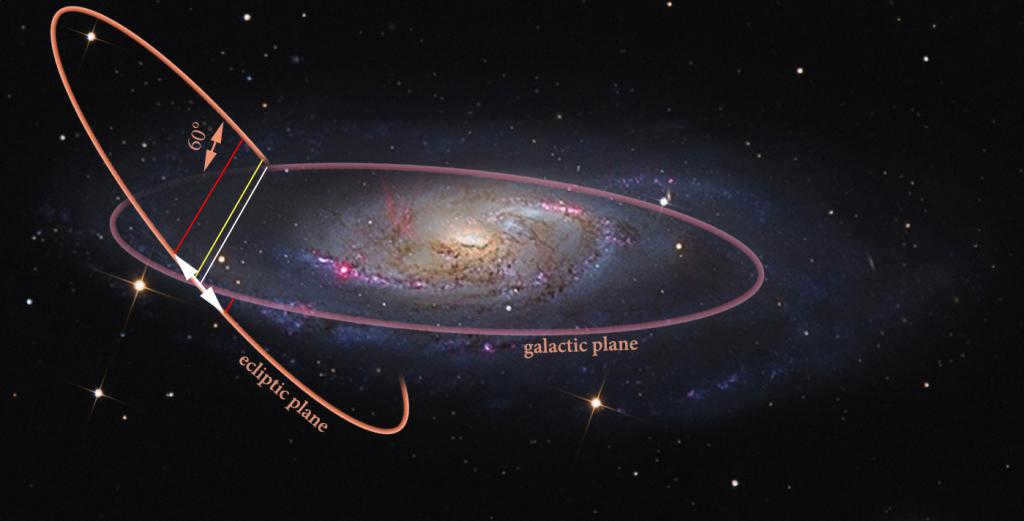
Types of celestial coordinates
There are two main types of celestial coordinates. The first type is known as geocentric coordinates, which takes the center of the Earth as the central point. This type of coordinate system is primarily used for calculating lunar orbits. The second type of coordinates is heliocentric coordinates, which considers the center of the Sun as the central point. This coordinate system is used to calculate the orbits of the planets in the solar system. It is important to note that the angle of inclination of the ecliptic varies periodically, so it is necessary to consider the epoch when specific coordinates were determined. As a result, the current coordinates of the ecliptic poles and the Sun are continuously determined.
Astrological Coordinate System
The astrological coordinate system is employed in the field of astrology. The primary coordinate utilized in this system is the zodiacal position, which is computed based on ecliptic longitude. Latitude is generally not employed in this particular system. However, in certain exceptional scenarios, it is determined in the same manner as in astronomy. The annual movement of the Sun and the ecliptic are significant indicators for astrology.

What is the Ecliptic?
Throughout history, people have held the belief that the position of the celestial bodies has an impact on human life. Just as alchemy fueled the development of chemistry, astrology played a role in the rapid advancement of astronomy during the Middle Ages. In astrology, each constellation is believed to have a unique influence on both humanity as a whole and individuals. Astrologers claim that everything, from successful marriages to the state of financial markets, is influenced by the combination of constellations and planets. There are two major astrological systems – Western and Vedic – each operating under its own principles, and their conclusions don’t always align. While modern science considers astrology to be a pseudoscience, many of us still read horoscopes from time to time. Almost everyone who studies astrology is familiar with the concept of the ecliptic.
There are numerous science fiction novels that depict the thrilling journeys of spaceships navigating through the asteroid belt, a region situated between the orbits of Mars and Jupiter. Well-known authors such as Efremov, Strugatsky, and Lem have included these exciting scenarios in their works. Similar to all the planets in our solar system, the asteroid belt revolves within the plane of the ecliptic. Is it possible for us to venture beyond this plane and avoid potential collisions? Regrettably, according to the principles of celestial mechanics, achieving this would demand an immense amount of energy and, consequently, a substantial supply of additional fuel. Furthermore, it’s important to consider that the return journey would also necessitate significant energy inputs. As a potential solution, solar sail spacecrafts that harness the power of the solar wind are being explored for future space exploration endeavors.

In one of S. In one of Lem’s tales about the pilot Pirks, flying in this region is strictly prohibited and declared off-limits. It is later revealed that there is a hidden alien spacecraft in the area. Navigating interplanetary orbits is an immensely challenging task, requiring the calculation of at least three moving objects and accounting for the planets’ gravitational forces and rotational characteristics. Spacecraft launched towards other planets follow intricate trajectories, occasionally utilizing the planets’ gravitational pull for acceleration.

Hence, the initial Pioneer-10 and Pioneer-11 spacecraft, dispatched in the 1970s, have already departed from the solar system due to the gravitational pull of Jupiter and Saturn. The ecliptic, a crucial element in all of these calculations, does not require an explanation when it comes to interplanetary voyages.

During the course of the year, the Sun traverses the expanse of the heavens. This is a result of the Earth’s orbital motion around the Sun. The celestial path along which the Sun travels is known as the ecliptic. But what exactly is the ecliptic and what purpose does it serve?

Understanding the ecliptic
The concept of the ecliptic can be easily understood by imagining a merry-go-round. As you sit on one of the horses and the carousel starts spinning, you get a panoramic view of the entire park. Initially, you notice the central pole of the carousel, but as you look further, you can see other rides, a ticket booth, and various billboards.
The plane of the ecliptic can be compared to a merry-go-round. If we imagine the horse as the planet Earth and the center pole as the Sun, we can visualize the planet’s movement around the Sun. Our Earth travels along its orbit at a speed of approximately thirty kilometers per second. As a result, everything that is behind the Sun, which is the central pole of the carousel, is constantly changing. It’s like sitting on a horse and gazing into the distance, where the view of the park keeps changing as you move around the circle. There are different kiosks, cafes, and other rides at each section of the circle. Similarly, our planet orbits the Sun, and everything that is behind it – the stars, galaxies – is always changing. At different moments in time, we see different constellations in the same position where they were a year ago.

Yearly Variations
It is a well-known fact that the Sun’s position above the horizon at noon undergoes changes over the course of a year. During the summer season, the Sun is situated high in the sky, reaching its highest point on June 22, which is also the longest day of the year known as the summer solstice. Subsequently, the Sun’s path gradually descends. The winter solstice, occurring on December 22, marks the day with the lowest boundary of the Sun’s path. On this day, the solar path above the horizon is at its lowest point, resulting in late sunrise and early sunset.
The Sun’s Journey through the Zodiac
What is the ecliptic and how does the Sun travel along it? If people were able to see the stars during the day, they would observe in late March that the constellation of Pisces is opposite the Sun. Over time, the Sun gradually moves to the east, passing through each of the constellations. If it were possible to see the stars around the clock, one could track the Sun’s movement into Aries, then Taurus after a month, followed by Gemini, Cancer, Leo, and so on. Each month, the Sun appears in a new constellation background. This pattern continues throughout the year, as the yellow dwarf makes its way through all the constellations of the Zodiac, with the last one being Serpens, situated between Scorpio and Sagittarius.
As it traverses the sky, the Sun traces a relatively large circle, aligning itself with the plane of the equator at 23027′. Over the course of a year, the Sun completes a full revolution along the ecliptic, moving in a counterclockwise direction. Each day, it shifts eastward by a mere one degree.
Along this path, there are two solstice points, which are located 900 away from the equatorial line. This means that the angle of the ecliptic on these particular days is 90 degrees.
Throughout its journey, the position of the ecliptic in relation to the horizon constantly changes.

The Sun’s Journey
What is the ecliptic and how does it relate to the zodiac? The zodiac is a vast band encircling the sky that follows the path of the Sun, Moon, and other planets. In this case, the Sun follows a nearly straight trajectory along a specific route, known as the ecliptic. Meanwhile, other planets and celestial bodies deviate in a north or south direction from this path.
Solar and Lunar Eclipses
The path of motion that can be clearly seen during a solar or lunar eclipse is known as the ecliptic line. This fascinating occurrence only takes place along this specific line. A solar eclipse can be witnessed when a satellite, such as the Moon, passes between the Earth and the Sun, completely or partially obscuring the solar disk. This phenomenon can be observed by people on Earth.
It’s important to note that eclipses do not happen on a monthly basis because the Moon is usually positioned either below or above the Earth’s ecliptic plane.

The Path of Motion of Other Planets
Scientists have provided evidence that the ecliptic is a spatial trajectory along which not only our planet moves, but also all the other seven celestial bodies of the solar system. All of them are situated approximately on the same path as our Earth. This fact allows astronomers to easily locate the position of other planets, as their ecliptic serves as a reference point for observing Venus, Mars, and other celestial bodies in the sky. Similarly, when discussing a specific planet, one can specify the path of its ecliptic during different times of the year.





